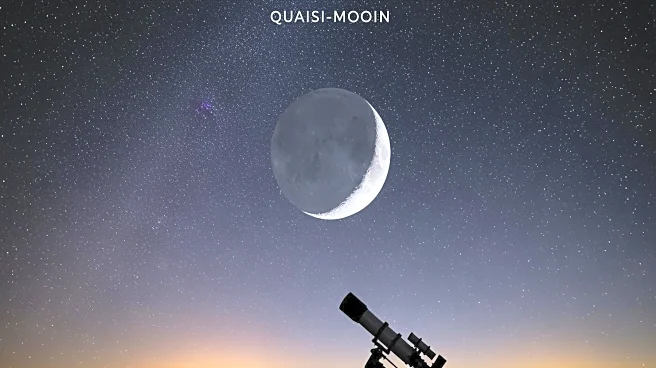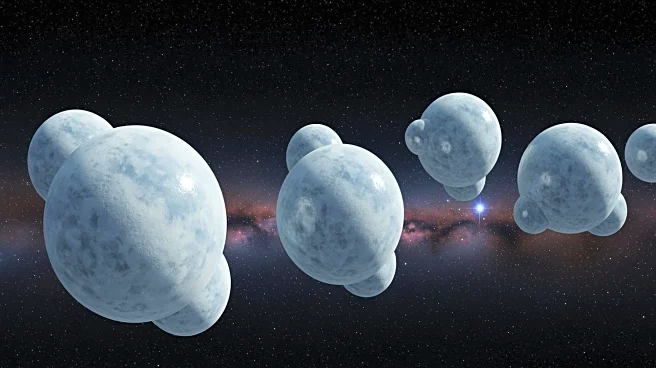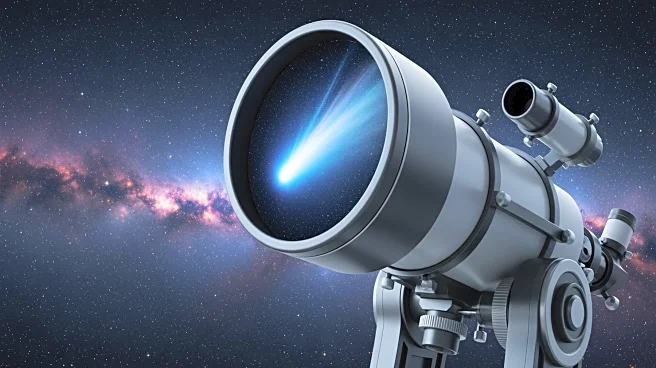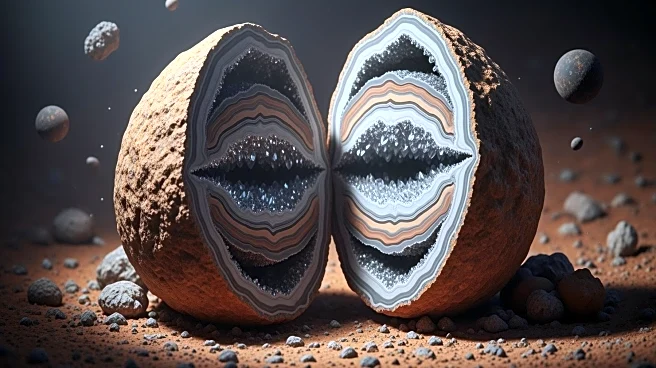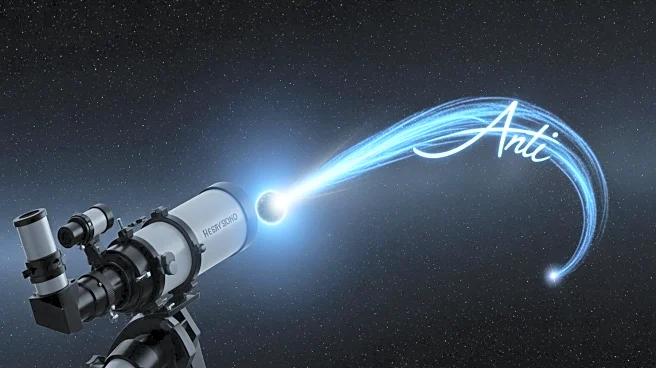What's Happening?
Astronomers have identified a previously unknown quasi-moon, named 2025 PN7, orbiting near Earth. This celestial object, a type of near-Earth asteroid, has likely been in proximity to our planet for approximately
60 years, undetected due to its small size and faint visibility. Unlike temporary mini-moons, quasi-moons like 2025 PN7 orbit the sun while remaining close to Earth. The discovery was made by the Pan-STARRS observatory in Hawaii, which captured observations of the quasi-moon on August 29. The object swings within 186,000 miles of Earth during its closest approach, and its orbit is similar to Earth's, taking one year to complete a revolution around the sun. The quasi-moon is expected to remain in its current orbit for another 60 years before transitioning to a horseshoe orbit due to the sun's gravitational pull.
Why It's Important?
The discovery of 2025 PN7 is significant as it expands our understanding of near-Earth objects and their potential origins. Quasi-moons like 2025 PN7 offer insights into the dynamics of celestial bodies in Earth's vicinity and may not pose an impact risk. Studying these objects can reveal more about the solar system's history and the composition of space rocks. Missions like China's Tianwen-2, which aims to collect samples from another quasi-moon, Kamo'oalewa, could provide valuable data on these objects. Understanding quasi-moons can also aid in developing planetary exploration technologies, offering opportunities for scientific advancement with relatively modest investments.
What's Next?
The quasi-moon 2025 PN7 is expected to remain in its current orbit for about 60 more years. During this time, astronomers will continue to study its characteristics, including its size and composition. The object is estimated to be about 98 feet across, though more precise measurements are needed. Researchers are interested in determining whether 2025 PN7 is a fragment of the moon or originated from the Arjuna asteroid belt. Future missions may target quasi-moons for exploration, providing further insights into their origins and potential uses in space technology testing.
Beyond the Headlines
The discovery of quasi-moons like 2025 PN7 challenges existing notions about the size limits of celestial objects that can orbit near Earth. It raises questions about the potential for other small, undetected objects in similar orbits. The study of quasi-moons could lead to advancements in understanding the solar system's formation and the processes that govern the movement of space rocks. Additionally, these objects could serve as test sites for new space exploration technologies, offering a practical approach to developing and refining methods for future missions.


